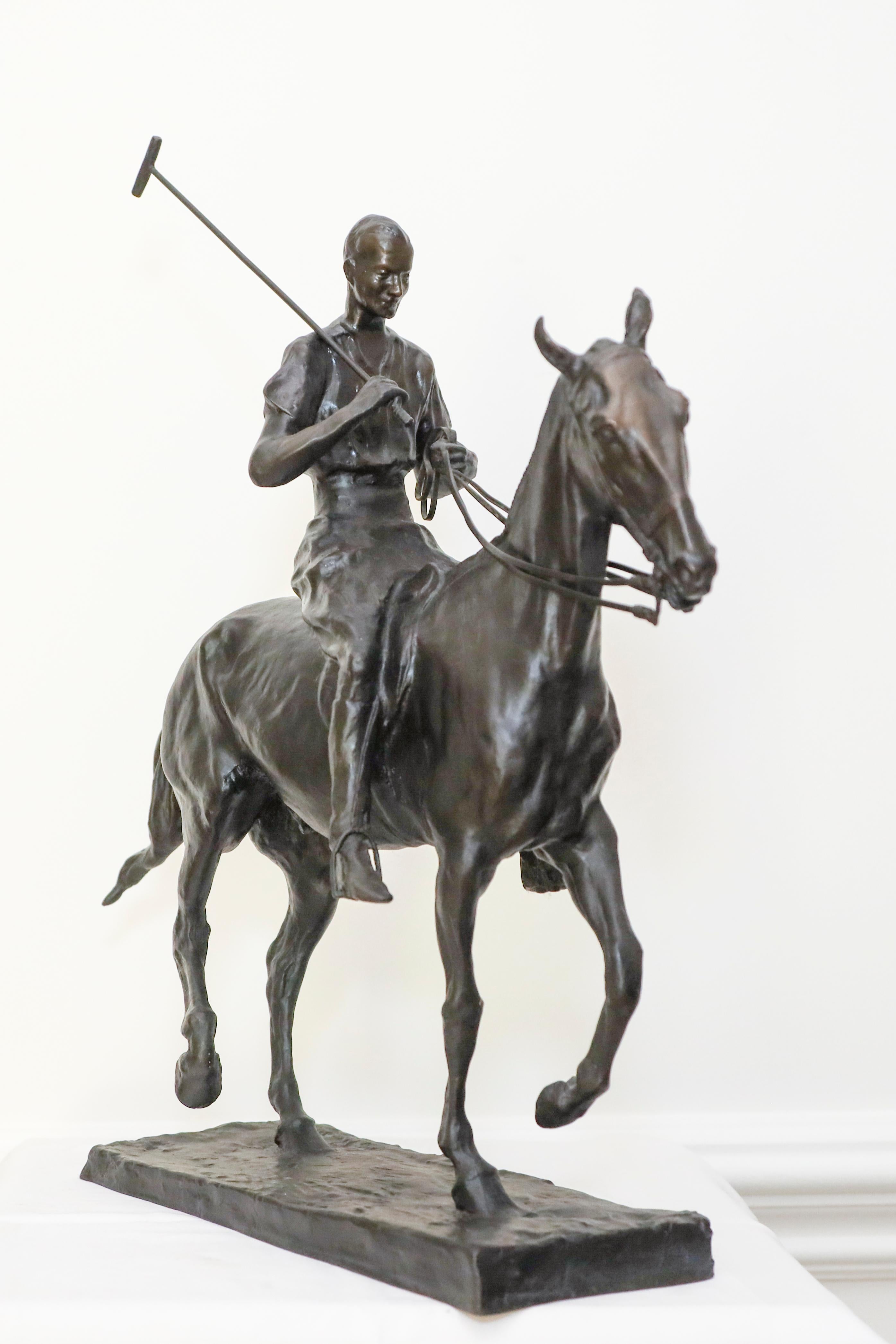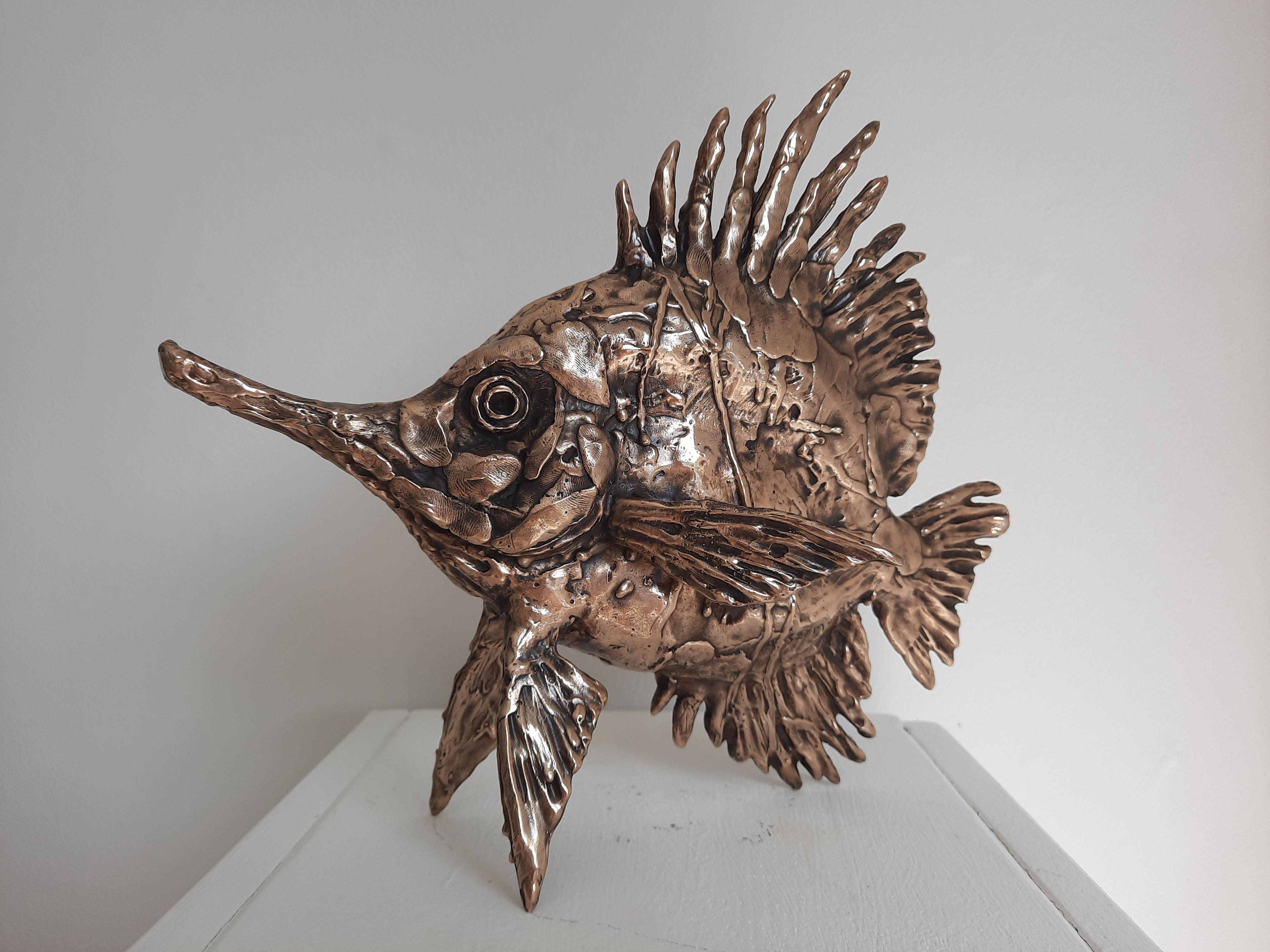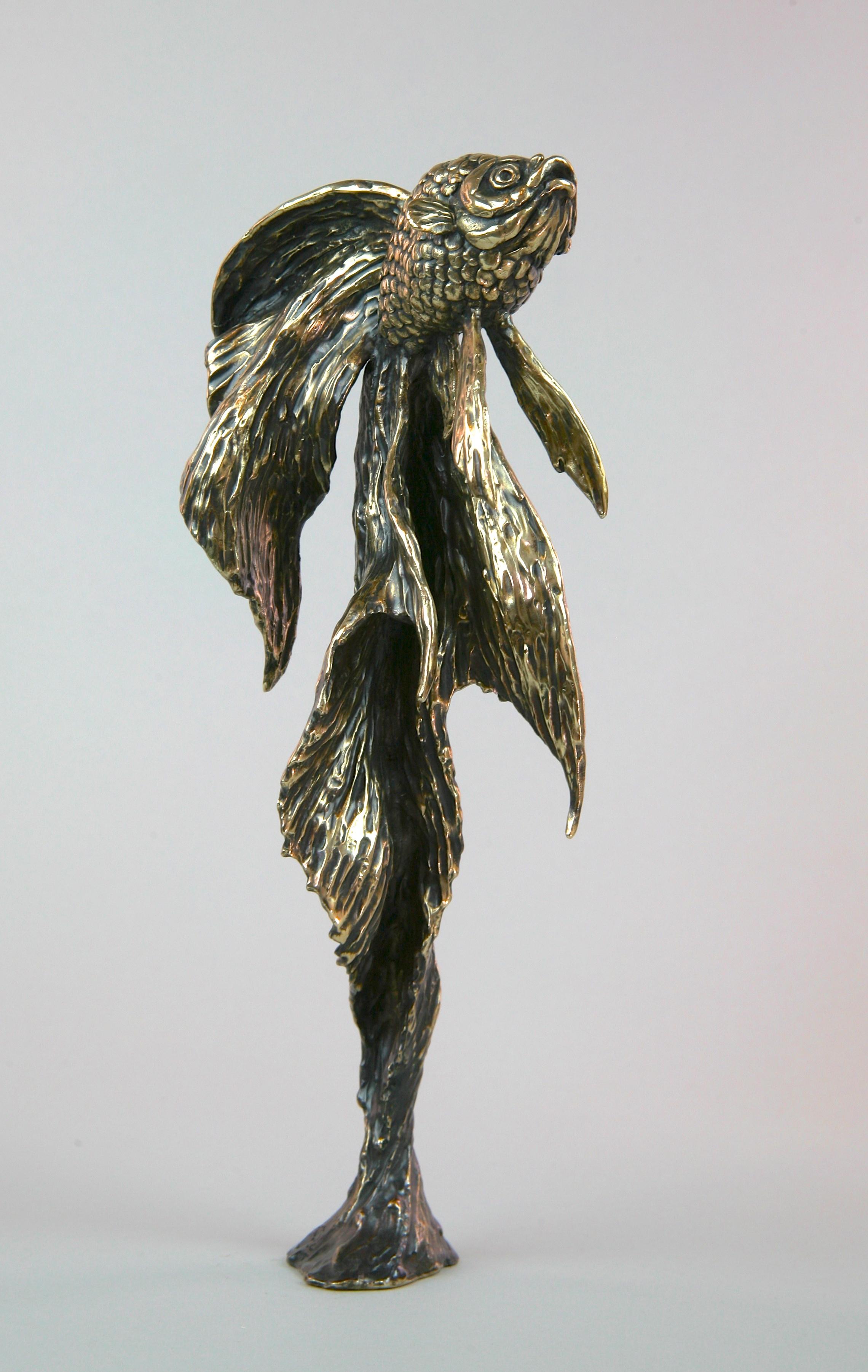David Hare"Dancer" Male Nude, Figurative Sculpture by Davide Hare, Mid-Century Surrealist1955
1955
About the Item
- Creator:David Hare (1917-1992, American)
- Creation Year:1955
- Dimensions:Height: 68 in (172.72 cm)Width: 17 in (43.18 cm)Depth: 13.5 in (34.29 cm)
- More Editions & Sizes:UniquePrice: $30,000
- Medium:
- Movement & Style:
- Period:
- Condition:
- Gallery Location:New York, NY
- Reference Number:1stDibs: LU1841214424992
David Hare
David Hare, a surrealist and Abstract Expressionist sculptor and photographer, was born in New York City on March 10, 1917. From 1936–37, he studied biology and chemistry at Bard College in Annandale-on-Hudson, New York. Hare had no formal training in art but began experimenting. He took up photography in the 1930s and by the end of the decade was working in color. The Walker Galleries in New York exhibited his photographs in 1939. From 1941–44, Hare founded and edited the surrealist magazine VVV with André Breton, Marcel Duchamp and Max Ernst. Peggy Guggenheim presented solo shows of Hare's work in her The Art of This Century Gallery from 1944–47. In 1948, he was a founding member, together with William Baziotes, Robert Motherwell and Mark Rothko, of The Subjects of the Artist school in New York and Hare, became friendly with Jean-Paul Sarte. Hare died on December 21, 1992, in Jackson.
- ShippingRetrieving quote...Ships From: New York, NY
- Return PolicyA return for this item may be initiated within 3 days of delivery.
- "Sculpin Fish" Paul W. Bartlett, Bronze Animal Sculpture, Decorative ArtsBy Paul BartlettLocated in New York, NYPaul W. Bartlett Sculpin Fish, 1896 Signed on base: PWB ’96 Stamped on base: SF Bronze 4 3/4 H. x 10 W. inches Known as a leading Beaux-Art sculptor, Paul Wayland Bartlett began his...Category
1890s Figurative Sculptures
MaterialsBronze
- "The Trap" Hayward Oubre, Painted Wire Sculpture, Black ArtistLocated in New York, NYHayward Oubre The Trap, c. 1960 Painted wire sculpture 40 H. x 16 1/2 W. x 21 D. inches Provenance: Estate of the Artist Deeply attached to his Souther...Category
1960s Figurative Sculptures
MaterialsWire
- "Hitch Hiked" Hayward Oubre, Painted Wire Sculpture, Southern Black ArtistLocated in New York, NYHayward Oubre Hitch Hiked, 1960 Signed on Base: OUBRE 60 Painted wire sculpture 45 H. x 21 W. x 19 D. inches Provenance: Estate of the Artist Deeply at...Category
1960s Figurative Sculptures
MaterialsWire
- "Tropical Parrot with Woman, " Corneille, Carved Wood Sculpture with BirdBy CorneilleLocated in New York, NYGuillaume Cornelis van Beverloo (Corneille) Tropical Parrot with Woman, circa 1970 Signed: Corneille Edition Number: 6 of 8 Constructed and Painted wood 39" high x 40 1/2" wide x 6" ...Category
1970s Figurative Sculptures
MaterialsWood, Paint
- "Untitled" Sidney Gordin, Abstract Metal Steel SculptureBy Sidney GordinLocated in New York, NYSidney Gordin Untitled, 1958 Incised with initials Welded Steel 15 x 10 1/2 x 6 inches Provenance: Eric Firestone Gallery, New York On October 24, 1918, Sidney Gordin was born in Chelyabinsk, Russia. He spent his early years in Shanghai, China. At the age of four, he moved with his family to New York. Gordin’s nephew, Eliot Nemzer recalls that when Gordin was a child he attended “a dinner party with his parents. Someone showed him a book of pictures that when thumbed through quickly made the image appear to move. This person then gave him a wad of blank papers and something to write with. Sid created a similar type of moving image with his materials. All the adults at the party became quite excited [and] praised his efforts. Sid told me he thought this was a pivotal experience in guiding him towards his vocation.” During his formative years at Brooklyn Technical High School, he briefly contemplated the idea of becoming an architect; yet, by the time he enrolled at Cooper Union, he was determined to become a professional artist. There, he studied under Morris Kantor (1896-1974) and Leo Katz...Category
1950s Abstract Abstract Sculptures
MaterialsSteel
- "Roland, " George Sugarman, Abstract Steel SculptureBy George SugarmanLocated in New York, NYGeorge Sugarman (1912 - 1999) Roland, 1970 Patinated steel 17 3/8 x 16 x 5 1/4 inches Incised with the artist's signature and numbered "15/17" on the underside Manufactured by Lippin...Category
1970s Abstract Abstract Sculptures
MaterialsSteel
- Sculpture of a Polo Player Harrison Tweed by Charles RumseyBy Charles Cary RumseyLocated in Brookville, NYPolo Pony and Rider Harrison Tweed . Charles Rumsey was an 8 goal polo player with Meadowbrook Polo Club on Long Island NY. He was an avid sportsman, equestrian and artist. His ab...Category
1910s Abstract Impressionist Figurative Sculptures
MaterialsBronze
- Longnose Butterfly Fish-original bronze wildlife sculpture-artwork-contemporaryBy Andrzej SzymczykLocated in London, Chelsea"Longnose Butterfly Fish" stands as a testament to the artistic brilliance of Andrzej Szymczyk, capturing the essence of underwater beauty in a mesmerizing tabletop sculpture. Crafte...Category
21st Century and Contemporary Abstract Impressionist Figurative Sculptures
MaterialsBronze
- Sea Angel Fish-original bronze wildlife sculpture-artwork-contemporary ArtBy Andrzej SzymczykLocated in London, Chelsea"Sea Angel Fish" is a breathtaking tableau rendered in the medium of bronze. This original tabletop sculpture transcends traditional wildlife representation, offering viewers a glimp...Category
21st Century and Contemporary Abstract Impressionist Figurative Sculptures
MaterialsBronze
- Sea Angel Fish-original marine bronze sculpture-artwork sale-contemporary artBy Andrzej SzymczykLocated in London, ChelseaAndrzej Szymczyk's "Sea Angel Fish" emerges as a captivating embodiment of aquatic beauty and grace, captured in the timeless medium of bronze. This original tabletop sculpture invit...Category
21st Century and Contemporary Abstract Impressionist Figurative Sculptures
MaterialsBronze
- Goldfish II-original bronze wildlife marine sculpture-Artwork-contemporary ArtBy Andrzej SzymczykLocated in London, ChelseaAndrzej Szymczyk's "Goldfish II" emerges as a shimmering testament to the beauty and grace of these beloved aquatic creatures, captured in the enduring medium of bronze. This origina...Category
21st Century and Contemporary Abstract Impressionist Figurative Sculptures
MaterialsBronze
- Golden "Taurus" sculpture, made from bronze, by Gianfranco MeggiatoBy Gianfranco MeggiatoLocated in Palm Beach, FLKinetic Bronze sculpture Size US: 40 1/5 × 13 4/5 × 13 4/5 in Size Europe: 102 × 35 × 35 cm Edition 1/6Category
2010s Abstract Abstract Sculptures
MaterialsBronze






